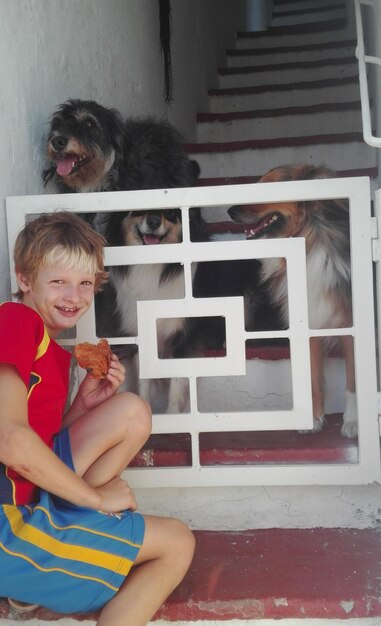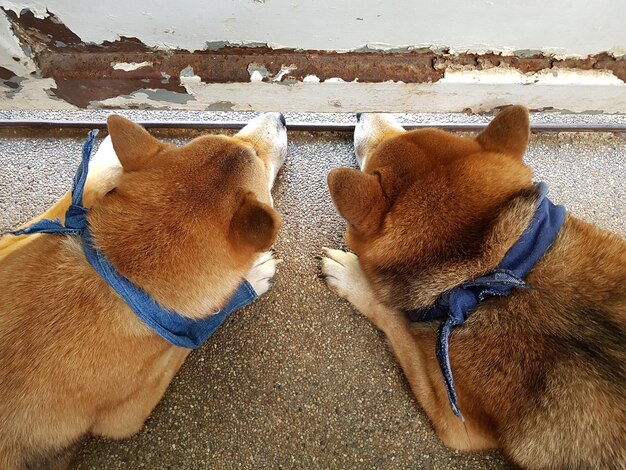The Unexpected Origins of Your Favorite Internet Memes

The Unexpected Origins of Your Favorite Internet Memes: Delve into the fascinating and surprising backstories of iconic internet memes, uncovering the real-life events, individuals, and cultural moments that sparked these viral sensations.
Have you ever wondered where your favorite internet memes actually come from? Beyond the catchy images and witty captions, there are often fascinating (and sometimes bizarre) stories behind these viral sensations. This article explores the unexpected origins of your favorite internet memes, revealing the real-life events, individuals, and cultural moments that launched them into internet stardom.
The Dawn of Memes: Before They Were Viral
Before the age of viral videos and social media frenzies, memes existed in a different form – as simple, shareable ideas. Understanding their roots is crucial to appreciating their evolution into the digital phenomena we know today.
The Initial Concept of Memes:
The term “meme” was coined by evolutionary biologist Richard Dawkins in his 1976 book “The Selfish Gene”. He defined it as a unit of cultural information, such as an idea, belief, or behavior, that is transmitted from one individual to another.
- Dawkins’ Definition: A meme is a unit of cultural transmission, analogous to a gene in biology.
- Early Internet Usage: Used to describe any idea or concept that spreads rapidly online.
- Beyond Images: Memes are not limited to images; they can be videos, phrases, or even behaviors.

This concept, originating from evolutionary biology, provides the foundation for understanding how ideas spread and evolve, both online and offline. From this foundational understanding, internet memes began their journey to becoming a defining aspect of our digital culture.
Success Kid: From Beach Photo to Global Icon
One of the most recognizable memes, Success Kid, started as a simple snapshot during a family vacation. The image’s journey from personal memory to global phenomenon is a testament to the internet’s power to amplify ordinary moments.
The Original Photo:
In 2007, Laney Griner took a photo of her 11-month-old son, Sammy, at the beach. Sammy’s determined expression and clenched fist struck a chord with viewers online.
The Meme’s Rise:
The photo was initially shared on Flickr and quickly gained traction on MySpace and other early social media platforms.
- Early Popularity: The image resonated with people due to its relatable depiction of determination and success.
- Meme Adaptations: Users started adding captions to the photo, creating various scenarios where Sammy was “succeeding” at something.
- Real-world Impact: The meme’s popularity helped the Griner family raise money for Sammy’s father’s kidney transplant.
Success Kid’s story highlights how an everyday moment, captured and shared online, can evolve into a symbol of hope and perseverance, impacting lives both online and in the real world.
Doge: A Shiba Inu’s Accidental Fame
Doge, featuring a Shiba Inu dog with inner monologue captions, is one of the internet’s most beloved animal memes. Its origins are rooted in an accidental photograph and the power of online communities to transform the ordinary into the extraordinary.
Kabosu’s Serendipitous Photo:
The original photo of Kabosu, the Shiba Inu, was taken by her owner, Atsuko Sato, in 2010 and posted on her blog.
The Meme’s Evolution:
The image was picked up by Reddit and Tumblr users, who added colorful, broken English captions expressing the dog’s inner thoughts.

- Unique Style: The meme’s distinctive use of broken English and Comic Sans font contributed to its quirky appeal.
- Community Creation: The Doge meme’s success was largely driven by the creativity and humor of online communities.
- Enduring Legacy: Doge has remained popular for over a decade, even inspiring the creation of a cryptocurrency.
Doge’s enduring popularity highlights the internet’s ability to immortalize fleeting moments and transform them into cultural touchstones, uniting people through shared humor and affection for a charming Shiba Inu.
Distracted Boyfriend: A Commentary on Modern Relationships
The Distracted Boyfriend meme, depicting a man looking at another woman while his girlfriend glares at him, has been used to satirize everything from politics to consumer habits. Its universal appeal lies in its ability to visually represent relatable conflicts and temptations.
The Stock Photo’s Unexpected Journey:
Originally a stock photo titled “Disloyal Man Walking With His Girlfriend and Looking Amazed at Another Girl,” the image was taken by photographer Antonio Guillem.
Meme Adaptations and Interpretations:
The meme’s popularity exploded when people started assigning labels to each character, representing different concepts and ideas.
- Versatility: The meme’s adaptability has allowed it to be used in a wide range of contexts, from humorous takes on personal relationships to incisive political commentary.
- Social Commentary: The Distracted Boyfriend meme often serves as a commentary on societal trends, consumerism, and the ever-present temptation of the “new” and “shiny.”
- Lasting Relevance: Despite its age, the meme continues to be relevant due to its ability to capture universal human experiences.
The Distracted Boyfriend meme exemplifies how stock photography, initially intended for commercial use, can be repurposed and transformed into a powerful tool for social commentary and humor, reflecting the complexities of modern life.
Harambe: A Gorilla’s Untimely Demise and Internet Tributes
The Harambe meme, born from the tragic death of a gorilla at the Cincinnati Zoo, took on a life of its own as internet users paid tribute in often absurd and satirical ways. It serves as a unique example of how meme culture can blend genuine emotion with dark humor.
The Real-Life Tragedy:
In May 2016, a three-year-old boy fell into the gorilla enclosure at the Cincinnati Zoo, prompting zoo officials to fatally shoot Harambe, a 17-year-old Western lowland gorilla, to protect the child.
The Internet’s Reaction:
The incident sparked widespread outrage and debate, with many criticizing the zoo’s decision and the parents of the child.
- Initial Outcry: The initial reaction was one of grief and anger, with many people expressing sadness over Harambe’s death.
- Meme’s Evolution: As time passed, the tributes became increasingly satirical and absurd, with users creating elaborate memes and jokes about Harambe.
- Cultural Impact: The Harambe meme became a cultural phenomenon, representing everything from internet activism to the absurdity of online culture.
The Harambe meme is a complex example of how the internet grapples with tragedy, blending genuine emotion with satirical humor and ultimately creating a unique and often controversial form of memorialization.
Rickrolling: The Art of the Unexpected Link
Rickrolling, the practice of unexpectedly redirecting someone to Rick Astley’s “Never Gonna Give You Up” music video, is one of the internet’s most enduring pranks. Its simple yet effective nature has made it a timeless form of online humor.
The Origins of the Prank:
Rickrolling originated on the 4chan imageboard in 2007, where users would post links promising something interesting but instead redirect to Astley’s music video.
How It Became a Phenomenon:
The prank quickly spread to other corners of the internet, becoming a staple of online culture.
- Simplicity: The prank’s effectiveness lies in its simplicity and the unexpected nature of the redirection.
- Ubiquity: Rickrolling has been incorporated into everything from YouTube videos to live events, demonstrating its widespread adoption.
- Rick Astley’s Embrace: Rick Astley himself has embraced the meme, further solidifying its place in internet history.
Rickrolling’s longevity and continued popularity are a testament to the enduring power of simple, unexpected humor and the internet’s ability to transform ordinary pop songs into cultural icons.
| Key Point | Brief Description |
|---|---|
| 📸 Success Kid | Started as a beach photo, symbolizing determination and success. |
| 🐕 Doge | Features Shiba Inu with broken English captions. |
| 💔 Distracted Boyfriend | Stock photo used to satirize modern relationships. |
| 🦍 Harambe | Tragic death of a gorilla became a satirical meme. |
FAQ
▼
A meme is a unit of cultural information, such as an idea, belief, or behavior, that spreads from person to person within a culture. On the internet, it typically takes the form of an image, video, or phrase that is shared and altered.
▼
The term “meme” was coined by evolutionary biologist Richard Dawkins in his 1976 book “The Selfish Gene”. He used it to describe how ideas and cultural practices spread and evolve within a society.
▼
Memes often become popular through their relatability, humor, or ability to capture a shared sentiment. They can spread rapidly through social media, online forums, and word of mouth, leading to widespread recognition.
▼
Rickrolling is a bait-and-switch prank where a hyperlink that promises unrelated content actually leads to the music video for Rick Astley’s “Never Gonna Give You Up.” It’s a popular and enduring meme that originated in the late 2000s.
▼
Memes can fade away quickly due to a variety of factors, including overexposure, lack of originality, changes in internet culture, and the emergence of newer, more relevant trends. The shelf life of a meme can be unpredictable.
Conclusion
From accidental snapshots to tragic events, the origins of our favorite internet memes are often more complex and unexpected than we realize. They reflect our shared experiences, humor, and the ever-evolving landscape of online culture, reminding us that even the silliest meme can have a surprisingly rich backstory.
